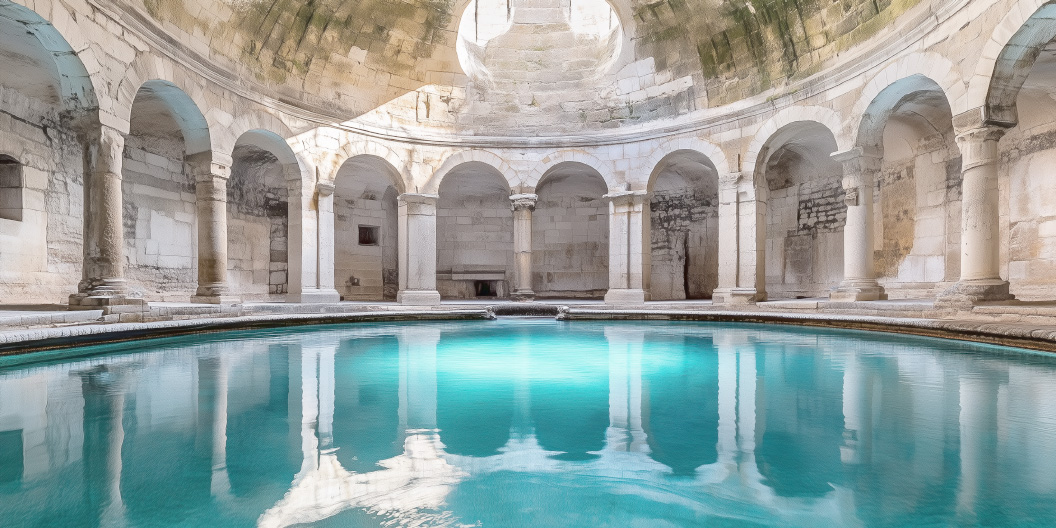Ancient Roots of Cold Exposure and Ice Baths?
From Ancient Practices to Modern-Day Benefits
Cold exposure and ice baths have become increasingly popular in the health and wellness space, particularly for their claimed benefits on mental clarity, physical recovery, and stress resilience. However, the use of cold water for health purposes is not a new concept. Throughout history, various cultures have used cold water therapy in different ways, and today, this practice has seen a resurgence, thanks in part to figures like Wim Hof and modern scientific research.
Let’s explore the history of cold exposure and ice baths, tracing their origins through ancient cultures, notable historical figures, and contemporary science.
Ancient Greece and Rome: The Beginnings of Cold Water Therapy
Cold water therapy in the context of health and wellness can be traced back to ancient Greece and Rome, where cold baths were integral to physical and mental recovery practices. The ancient Greeks, particularly athletes, would frequently use cold baths after intense physical exertion to aid recovery. This practice was recorded in historical texts, particularly within the context of gymnasiums and public baths.
The Roman thermae, or public bathhouses, also utilized cold water baths known as the frigidarium. The frigidarium was the final step in the Roman bathing process, where bathers would immerse themselves in cold water after progressing through increasingly warmer rooms. The Romans believed that cold immersion helped refresh the body, improve circulation, and balance the mind after the warm baths.

19th Century: The Rise of Hydrotherapy
While cold exposure practices faded during the Middle Ages, the 19th century saw the rise of hydrotherapy as a formal medical practice. The resurgence was led by Vincent Priessnitz, an Austrian farmer who developed his system of hydrotherapy after using cold water to heal his injuries. He treated patients with cold water immersions, compresses, and showers, claiming that cold water could detoxify and heal the body.
Priessnitz's methods gained widespread popularity across Europe, and many followed in his footsteps. One of the most notable figures was Sebastian Kneipp, a Bavarian priest, who expanded on Priessnitz’s work and developed a holistic system of hydrotherapy that combined cold water treatments with diet and herbal medicine.
20th Century: Scientific Exploration of Cold Exposure
By the 20th century, scientists began exploring the physiological effects of cold exposure on the body, particularly its effects on circulation, metabolism, and immune response. Cold water immersion became standard practice in sports recovery as it was shown to reduce inflammation and promote muscle recovery following intense exercise.
Cold exposure research expanded, with studies showing how the body adapts to cold environments by increasing brown fat activity, which boosts metabolism and helps the body maintain core temperature.
Wim Hof: Bringing Cold Exposure to the Modern World
One of the most well-known modern figures in cold exposure is Wim Hof, also known as "The Iceman." Hof has popularized cold exposure through his Wim Hof Method, which combines cold therapy with breathing exercises and meditation. Hof's extreme feats, such as spending nearly two hours submerged in ice, have attracted significant media attention and led to scientific studies.
Researchers have studied Wim Hof’s method, finding that it can influence the autonomic nervous system and immune response, giving credence to some of Hof’s claims about cold exposure’s health benefits.
Conclusion: Embracing the Cold for a Better Life
From the ancient Greeks and Romans to modern-day enthusiasts like Wim Hof, cold exposure has a long and fascinating history. Whether it’s for physical recovery, mental toughness, or overall health, cold water immersion continues to capture the interest of wellness seekers around the world. Modern research is helping to validate the benefits that humans have been experiencing for millennia. Whether you're a seasoned ice-bath enthusiast or someone looking to try it for the first time, cold exposure can offer an exciting and refreshing way to challenge your body and mind.
If you're ready to experience the benefits yourself, consider participating in The January Ice Challenge at TheChallenge.org and see how cold exposure can help you unlock your potential. Test yourself, help science, and maybe win a prize while you are at it.
References:
1. DeLaine, Janet. The Baths of Caracalla in Rome: A Study in the Design, Construction, and Economics of Large-Scale Building Projects in Imperial Rome. Journal of Roman Studies, 1997.
2. Barton, Edwin H. A Treatise on the Diseases of the Spine. C. & E. Layton, 1844.
3. Tipton, Michael J. "The physiological responses to cold water immersion." Journal of Physiology, 2012.
4. Kox, Matthijs, et al. "Voluntary activation of the sympathetic nervous system and attenuation of the innate immune response in humans." Proceedings of the National Academy of Sciences, 2014. 5. Shevchuk, Nikolai A. "Adapted cold shower as a potential treatment for depression." Medical Hypotheses, 2008.





 Karol Banaszkiewicz, our founder, is a seasoned technologist and lifelong health-hacker who noticed a glaring gap in how we track the real effects of daily routines. Driven by a passion for data-backed self-improvement, he committed his own time and resources to launching TheChallenge.Org—to rigorously measure how habits shape our physical and mental well-being.
Karol Banaszkiewicz, our founder, is a seasoned technologist and lifelong health-hacker who noticed a glaring gap in how we track the real effects of daily routines. Driven by a passion for data-backed self-improvement, he committed his own time and resources to launching TheChallenge.Org—to rigorously measure how habits shape our physical and mental well-being.